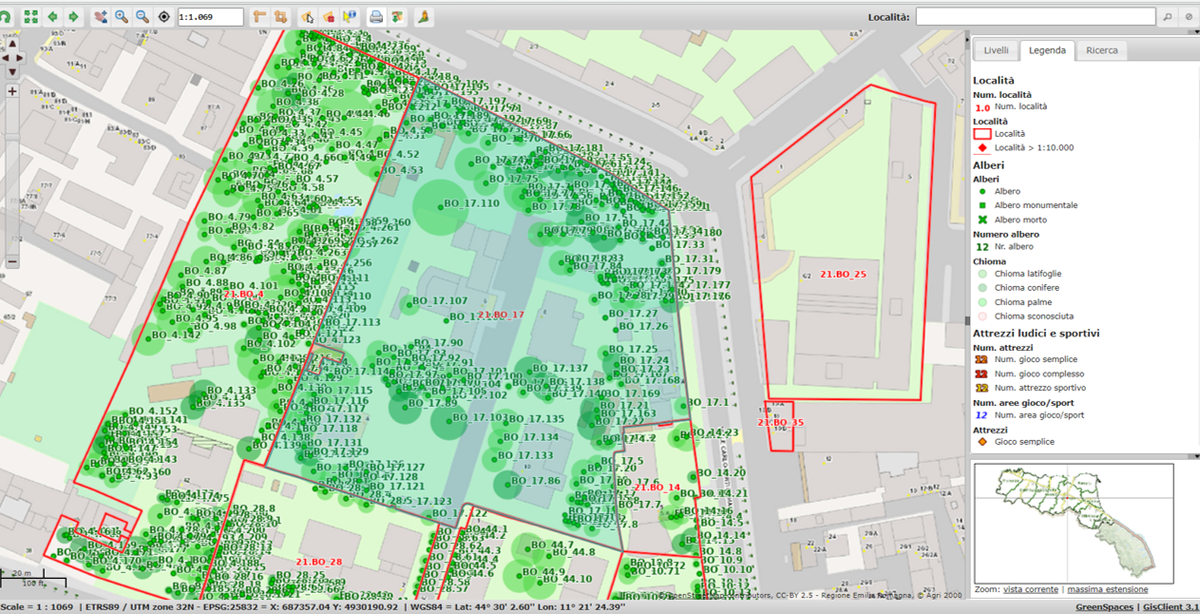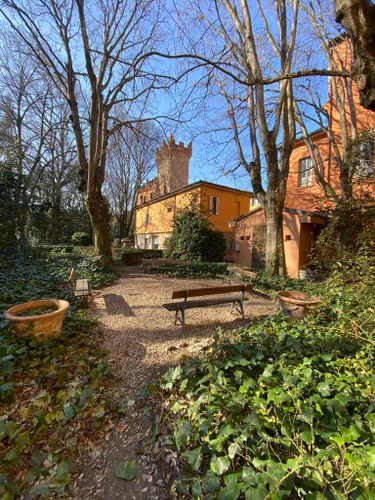Actions for green census and maintenance
For the biennium 2022-2023, regarding the horizontal and vertical green maintenance service, the Alma Mater has joined the agreement of the Metropolitan City of Bologna.
In order to improve and expand the knowledge of the University's arboreal heritage, constantly monitoring its health status, a new software (R3GIS) has been adopted, which is more performant than the previous AlmaAlberi.

R3GIS software: area Filippo Re - Botanical garden

During 2022, as many as 2,810 trees were surveyed and georeferenced at the University Citadel and Bologna districts.
Through visual and instrumental surveys, all information regarding each individual plant was obtained: name, biometric data, location, past maintenance, yield propensity class, proposed workings, etc. This information can be viewed and consulted through the R3GIS software, which returns a general and detailed picture of all the areas involved in the census.
Visual surveys are carried out on an annual basis, while instrumental surveys are scanned on a case-by-case basis: by querying the software, it is possible to verify the total number and species of trees in need of further investigation and their periodicity.
This level of detail makes it possible to plan targeted interventions based on the health status of the trees, decreeing felling for safety reasons or poor life prospects or the indication of specific cultural interventions.
Of the trees investigated in 2022: